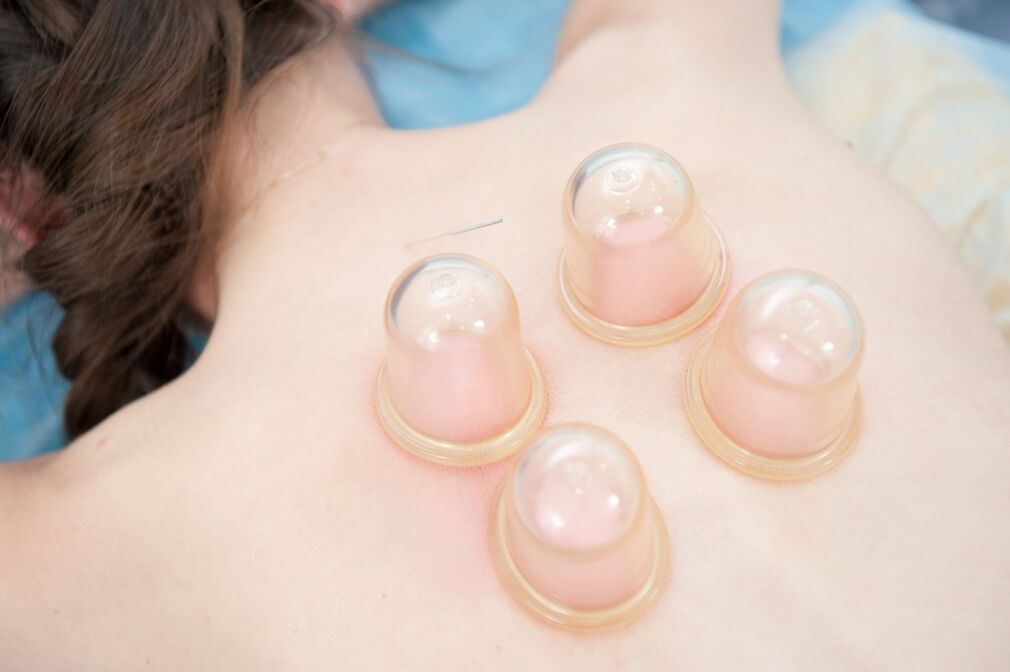
Osteochondrosis is a deep disease of dystrophically, in which there is a violation of the structure and function of the intervertebral disc.Neck osteochondrosis is a damage to the cervical spine.
During the pathological process with osteochondrosis of the intervertebral disc pulp (middle, soft) ossifies, loss of depreciation.The cervical spine loses flexibility, mobility, blood vessels and nerve endings are violated in the canal between the vertebrae.The specialty of this pathology is that the symptoms can resemble other signs of the disease, as a result the diagnosis of the disease is difficult and adequate treatment is prescribed when irreversible changes have begun in cartilage.
Cervical osteochondrosis, symptoms and treatment to be described below, as well as cervical osteochondrosis, develops in the middle and older age, earlier in men, and somewhat later in women, and in recent years "rejuvenation" of neck osteochondrosis has been observed.Of course, for years, even in healthy spine, the intervertebral disc cartilage tissue has been replaced by fibrous fibers over time, it is compacted and hardened.This process is natural, it leads to a decrease in spinal movement, but by pain, as a rule, it is not accompanied, as the fibrosing process does not affect the nerve endings and does not cause infringement.In contrast to natural physiology, pathological changes in the intervertebral disc, features of osteochondrosis, spread outside the cartilage, which cause blood vessel compression and nerve endings, pain and vascular syndrome.
The cause of cervical osteochondrosis
Partly in the development of "guilty" neck osteochondrosis, frustrated with modern people and the same load distribution throughout the spinal column, as well as the natural process of body tissue aging, in addition, there are some provoking the development and development of this pathology:
- SEDENTARI LIFE;
- Long stay in the same position while working;
- excess weight;
- continuous injury of the spine in the neck;
- chronic stress, persistent nervous tension;
- Normal hypothermia of the collar zone muscles (for example, when it is near air flow from air conditioning);
- Congenital vertebral anomalies and intervertebral discs.
What is a harmful osteochondrosis of the neck?
First of all, neck osteochondrosis complicates several movements, making them painful, putting their contributions to the patient's hypodynamy, which in itself is dangerous.Devil circles arise: small physical activity causes osteochondrosis, which makes the patient more physically active, which in turn contributes to the development of the disease.
In addition, in the channels throughout the cervical region, the most important nerve plexus and blood vessels, irritation and violations that cause reflex headaches, chronic dizziness, blood pressure instability, which can cause patients inconsistent, significantly reducing the quality of life.
The special hazard of neck osteochondrosis is in a difficult diagnosis and a high probability of improper, inadequate.
Symptoms of cervical osteochondrosis
The manifestation of cervical osteochondrosis is worn, which greatly complicates the diagnosis.As a result, the patient, as a rule, deals with a doctor even though the process in the intervertebral joint is an irreversible character.The most important symptoms of neck osteochondrosis include:
- dizzy;
- headache;
- Sharp changes in blood pressure.
All of the signs listed are not specific, they can be shown not only for cervical or cervical osteochondrosis, but also for many other diseases.Therefore, it is very important for any of these symptoms to consult your doctor and have a full medical examination to find out the true cause of this condition.
In addition, cervicalgia is a feature of neck osteochondrosis, or neck pain.It can locate the back, "in the depth of" neck, and give it to the shoulders, hands.The start -up - The pain attack is a feature - immediately after the resurrection, after sneezing or coughing, laughter, sharp movements.The pain, as a rule, is modest, combined with the crisis in the cervical vertebra while trying to turn the head on, and if the process has not received an irreversible current, after a few seconds it is depleted.
Separately, it should be said about fluctuations in blood pressure in cervical osteochondrosis.These are non -specific symptoms, but there are some signs that fit the blood pressure jump relationship with osteochondrosis can be established.Such connections are characterized by fluctuations in blood pressure throughout the day.Long hypertension, on the other hand, is not uncommon for osteochondrosis.The cause of pressure fluctuations lies in the reflex reaction from the nerve endings of the blood vessel wall in response to their irritation and compression.As a rule, blood pressure jumps for osteochondrosis accompanied by headaches, limbs, affected muscles and skin sensitivity in the collar zone.
In addition, cervical osteochondrosis is characterized by several syndrome (combination of several symptoms):
- Vertebral - a number of symptoms associated with damage to the vertebral bone tissue (pain in the neck while trying to turn on the head, violates the cervical spinal mobility, morphological changes in the vertebral body and the intervertebral disc);
- Vail arterial syndrome - Some symptoms that indicate the pathological process connection with the vertebral artery.With inadequate blood flow to the artery, when it is compressed, the noise in the ear, dizziness, blood pressure skills, nausea to vomiting, amazing taste.Nervous tip irritation in the artery wall is indicated by migraine, "flies in the eye", and a temporary decrease in visual acuity.Oxygen starvation of brain tissue, which feeds the vertebral artery, is characterized by fainting, chronic drowsiness, persistent headache, weakness, decrease in concentration and performance.This syndrome is characteristic not only for osteochondrosis, but also for atherosclerosis and other pathology of circulatory disorders in the vertebral artery;
- Korshka - It occurs due to compression of the spinal cord, a defeat provided is characteristic.Typical symptoms: pain, impaired sensitivity, paresis and paralysis of the hand, face and neck;
- The heart - Some of the symptoms caused by heart reflex disorders (pain, burning behind the sternum, shortness of breath, tachycardia).
The level of the neck osteochondrosis
First degree - characterizes the early stages of the disease, clinically indicated by pain in the neck after the movement suddenly, sneezing.The pain is acute, resembling the release of electric current.At the same time, damage to the intervertebral disc capsule morphologically, which causes irritation of the nerve endings.The pain in the neck can be accompanied by pain in the back of the head, the sound of the ear, the flashing flies in front of his eyes.
Second - The duration of the development of the disease.At this stage, the pain in the neck becomes constant, there is narrowing of the intervertebral hole and in this connection - a permanent violation of the spinal cord and vessels that occur in it.The intervertebral joint capsule is thinner, the pathological mobility of the spine in this area occurs.Muscle atrophy.Changes in blood pressure are characteristic.In severe illness, "falling head symptoms" may appear - the need to support the head with the hands to relieve pain and improve it in a certain position.
Third degree It is characterized by the destruction of the fibrous rings of the intervertebral disc, as a result of the possible complications of osteochondrosis: vertebral dislocation, intervertebral hernia, spinal curvature.The pain is intense, giving his hands to the shoulder, in addition to the pain in the neck is interrupted by headaches, dizziness, sharp jumps in blood pressure, the patient loses work capacity.
Diagnosis of cervical osteochondrosis

The diagnosis of "neck osteochondrosis" is made based on patient examination and review, the level of morphological changes in the intervertebral disc helps establish X-ray examination and magnetic resonance imaging.In addition, it is important to exclude other diseases with the same symptoms: heart attack, hypertension, organic brain damage, migraine, which requires consultation of related experts.
Treatment of cervical spinal osteochondrosis
The amount of therapeutic steps for neck osteochondrosis directly depends on the level of pathological process.The treatment will be more effective than before it begins, so it is very important to consult a doctor on time, with the first episode of pain in the neck, dizziness, not expecting painful symptoms to pass by on its own.
In the early stages of the disease, the treatment of cervical spinal osteochondrosis is reduced to eliminate pain syndrome using NSAIDs and local painkillers (ointment, cream) or systemic (tablets, injections) action.In addition, the recovery of common metabolic processes in cartilaginous tissue intervertebral discs play a major role, in which chondroprotectors are used - drugs that stimulate metabolism in cartilage and normalization of its structure.Chondroprotectors stimulate the process of production in cartilage proteoglican tissue that forms cartilage structure.At the same time, inflammation and damaging processes in the cartilagin tissue are suppressed.
With the development of the pathological process, in addition to the therapy described can serve as an antispasmodic and relaxation of the muscle to eliminate muscle cramps.Doctors may recommend novocaine blockade to relieve pain, however, this method can be associated exclusively for palliative, which allows for the removal of painful symptoms, but does not affect the journey of neck osteochondrosis.With advanced osteochondrosis, surgical treatment can be one of the most effective remedies, as the possibility of conservative treatment at this stage is exhausted.
Physiotherapy methods for treating osteochondrosis have proven themselves well: electrophoresis, magnetotherapy, ultrasonic therapy, mud.Traditionally the important part of the complex treatment of osteochondrosis is massage and manual therapy. Keep in mind that all physiotherapy methods must be used only if the neck osteochondrosis is in the remission stage, otherwise you can only activate the pathological process.Any manipulation during the massage should be soft.
Keep in mind that all physiotherapy methods must be used only if the neck osteochondrosis is in the remission stage, otherwise you can only activate the pathological process.Any manipulation during the massage should be soft.
Medical Physical Education (Training Therapy) with cervical osteochondrosis
An important role in the treatment of osteochondrosis is obtained by training therapy.The methods of physiotherapy are different, however, their general essence has not changed: the recovery of healthy mobility of the affected area and, which is associated with stimulation of blood supply and cartilage nutrition.With the diagnosis of "cervical osteochondrosis", training should be as possible, the load on the spine is minimal.Suddenly, rotation, rotation, deep tendency is unacceptable, which can contribute to damage to the intervertebral joint capsule and worsen the pathological process.
Prevention of cervical osteochondrosis
The cartilage is not restored, and therefore it is advisable to prevent its development from later trying to treat the consequences.The basis of prevention of cervical osteochondrosis is a healthy lifestyle, reasonable mobility, rational nutrition, weight control, small rest in gymnastics with inactive professional activities.In addition, at the first signs of dysfunction from the cervical spine, you should consult your doctor and if there are signs to start taking chondroprotectors that will help normalize the metabolism in the cartilage and significantly delay the development of the disease.


















